
Story has it that during the 9th century, when Norway was still a cluster of rival kingdoms, an epic battle near the city of Stavanger tilted the balance on one side’s favor. Paying a tribute to the very battle that purportedly unified the country, Sverd i Fjell comprises of three giraffe-sized swords, planted into the ground where according to the lore, the fighting took place.

By: Omri Westmark
Date: 18:10 18.03.23
Last Update: 18:12 18.03.23
For the last couple of decades or so, Norway has been consistently regarded as one of the world’s most peaceful and prosperous countries. Nonetheless, it wasn’t always that way. In fact, over a millennium ago, the nation was fractured into several separate entities. In 872, the internal conflict culminated when three competing monarchs clashed for dominance over the entire territory.
Known as the Battle of Hafrsfjord, the mostly naval skirmish took place in the fjord of Hafrsfjorden, located in the outskirts of Stavanger. The battle ended in a decisive victory for one side, Harald Fairhair, who subsequently unified the Nordic nation under his rule, becoming King Harald I of Norway.
In practice, though, historians fail to agree whether this single battle actually consolidated the Norwegian people under one ruler, or the unification gradually unfolded over centuries. Whatever the answer might be, the battle is unanimously considered as a defining moment for Norway and as such, it is commemorated by a series of monuments throughout the Land of the Midnight Sun.
Sculpted by Norwegian artist Fritz Røed, the Sverd i fjell (Swords in the rock) monument was unveiled in 1983 by the then king of Norway, Olav V. What sets Sverd i fjell apart from any other memorial across the country is its location, the alleged battlefield itself, situated in the city’s Hafrsfjord neighborhood.
The monument features three massive Viking daggers embedded into the rocky hill overlooking Møllebukta bay. Whereas the largest of which (9.2 meter tall) represents the battle’s victorious side, the pair of smaller sabers stands for the two defeated armies. Each hilt is crowned by a different ornament, symbolizing the three belligerent kingdoms. Intimidating as they might look, these oversized swords are well-anchored to the boulders, akin to the peace and unity Norway is now synonymous with.
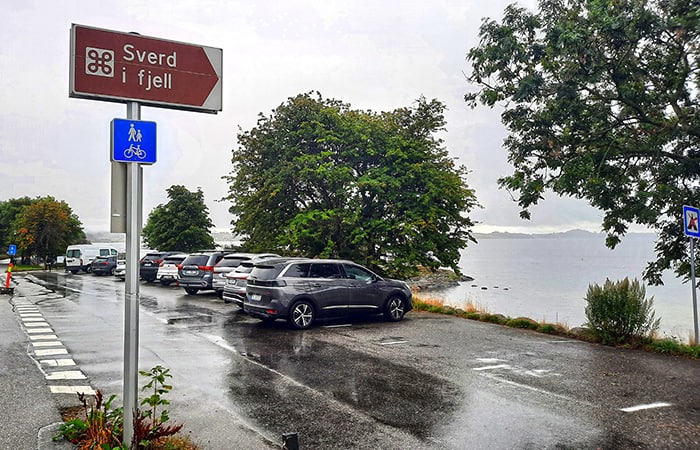
The nearby parking lot and the sign indicating where is the monument located
photography by: Omri Westmark
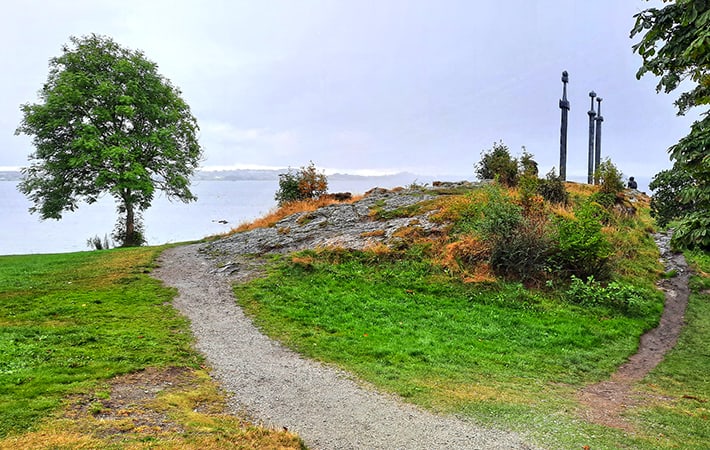
photography by: Omri Westmark
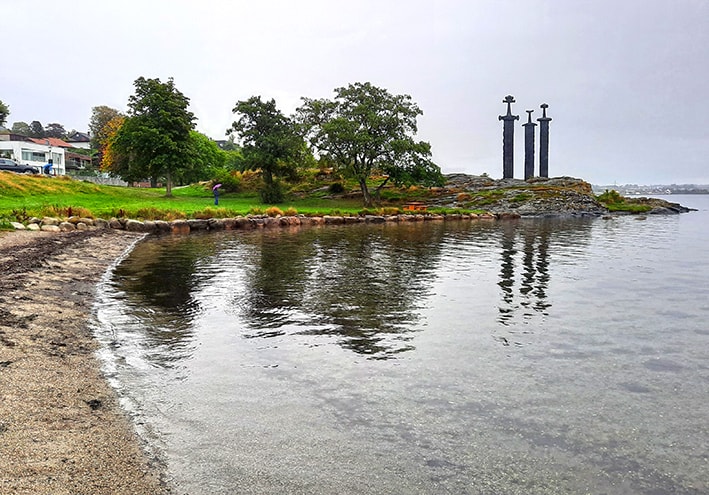
The bay of Møllebukta with Sverd i fjell in the background
photography by: Omri Westmark
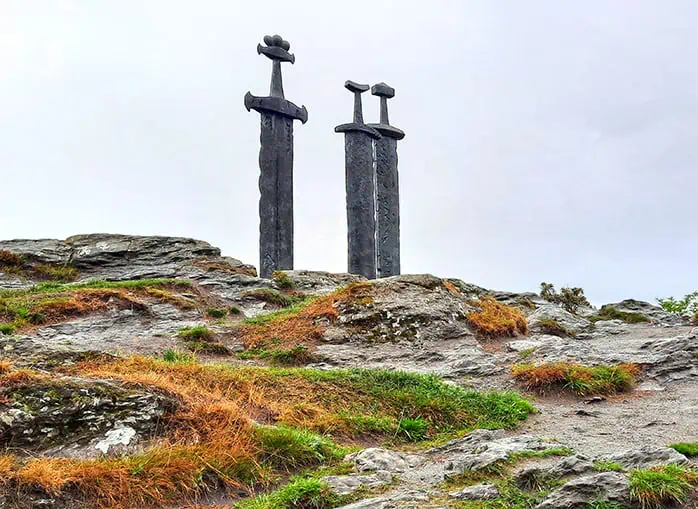
photography by: Omri Westmark
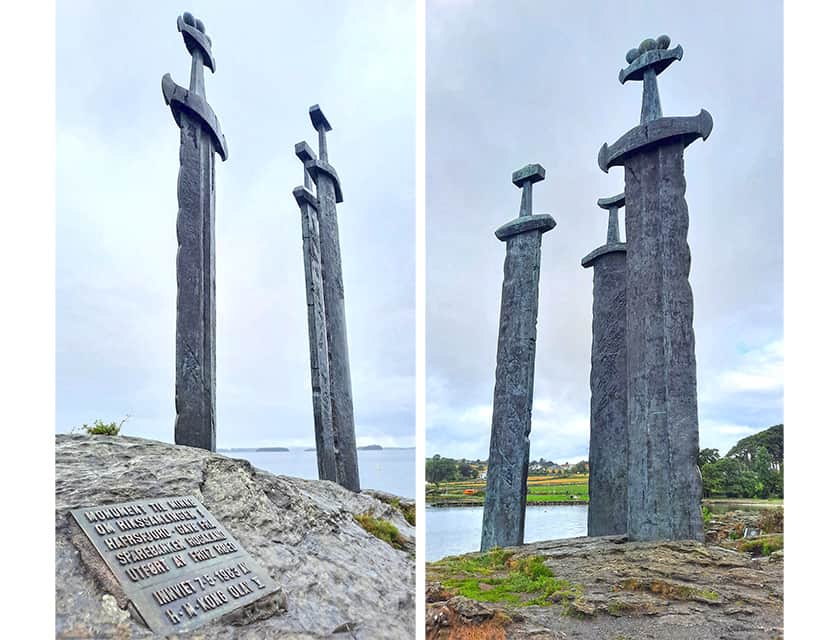
A plaque on one of the rocks provides some details about the monument and its inauguration
photography by: Omri Westmark

photography by: Omri Westmark
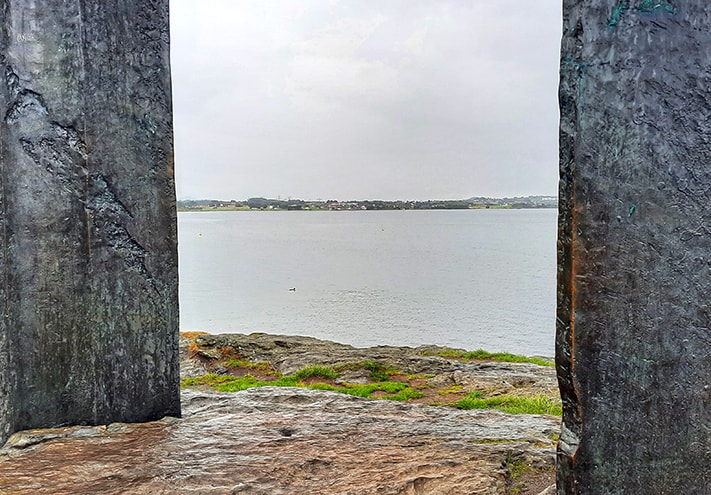
photography by: Omri Westmark
